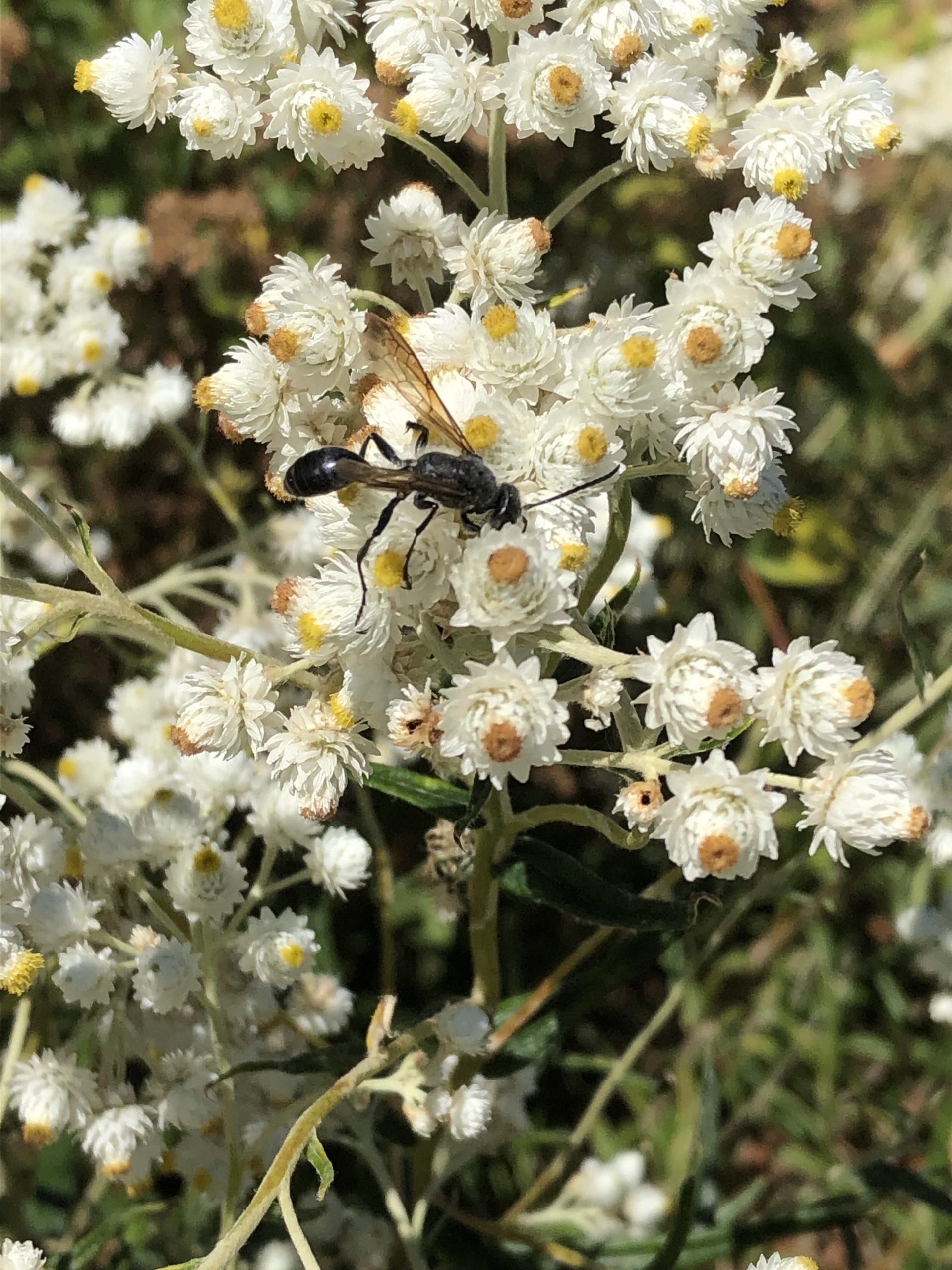Site Information: Melissa’s site in St. Johns has full sun, part shade, and dry to moist soil conditions

What inspired you to enroll in the Backyard Habitat Certification Program?
I saw lots of signs in my neighborhood after I had met my husband. Our yard is large, but was mostly weedy lawn, some overgrown photinias, a few arborvitae, and two large trees in front. I had recently certified as a Master Gardener and wanted to redo the entire yard with vegetables, fruit trees, and native plantings that would need few resources.
How would you describe your habitat?
I’ve created lots of stick piles throughout the front and back yard. All lawn was removed, including the parking strips. I added a bird bath, mason bee house, and we have a snag from a cedar that died. There are also a few piles of rocks scattered through the yard. We are still waiting to add rain gardens until we get some work done on the outside of the house. I wouldn’t use any pesticides unless it was dire, though so far it’s all been good.

What are your top three favorite native plants and why do you love them?
The main two are serviceberry and chokecherry since I grew up with those in ND and both provided berries that my grandma would make pies and jelly with, so I have a lot of good memories from those even if mine don’t produce quite the same here. I also like the red elderberry because I am now using it to make elderflower syrup. Though a close third is the pearly everlasting considering how many new insects I found on it last year.

What changes have you observed as a result of creating habitat?
I have seen a lot of birds and insects in the yard now. Even a few mammals are stopping by at the water bowl in the front yard at night. Here’s a list of things I’ve seen the last couple of years:
- ground-dwelling bees making nests
- mason bees
- grass wasps
- saw flies 🙁
- gray hairstreak
- great golden digger wasp
- bilobed looper moth
- golden crab spider
- jumping spiders
- towhees
- golden crowned sparrows
- brown creeper
- nuthatch
- cedar waxwings
- chickadees
- house finches
- yellow finches
- bush tits
- downy woodpecker
- flickers
- Anna’s hummingbird

What were the two most significant challenges you encountered while creating habitat, and how did you address them?
The main challenge is the size of our yard, so there was a lot to cover. Fortunately, I was able to take out most of the shrubs and till the grass in back. The entire lot has been sheet mulched and that has taken the last 5 years to complete: front, back, and parking strips. Most of the yard is now planted, but there is still space in the front and one side of the house that are waiting for plantings once we get some work done on the outside of the house. I also took the approach to get structural plants in place first and fill in as I went. There is plenty of time to fill in everything to see how to responds to our yard.
What resources did you find especially helpful?
The Portland Plant List has been great. I like that it divides the plants into habitats and helps me plan. But I have used all the materials provided by Backyard Habitat to help me research which plants to buy that will fit in different spaces of my yard.
How do you enjoy your Backyard Habitat throughout the different seasons? What are its highlights in each season?
Spring is best since all the birds are starting to come back and it’s nice to spot who is new. Summer brings lots of different insects and the veggie garden is producing. I actually look forward to late fall to take a break from the yard jobs before winter planting and pruning starts again. Having structure in the yard is still nice in the winter, and makes for interesting scenes when it snows or ices over.

What part of your backyard habitat are you most proud of?
All of it! It has been a lot of work to transform it from a dried out weedy lawn to what it is now. I think I am most happy with all the life that visits and I was able to give them a better space.
